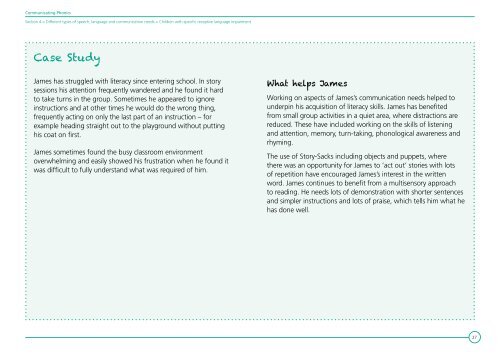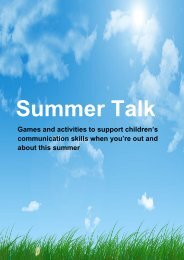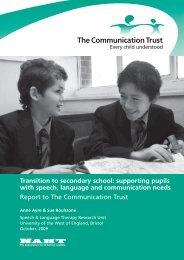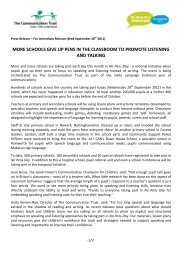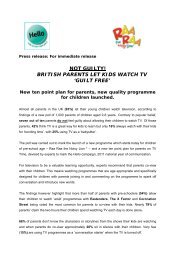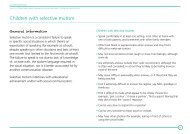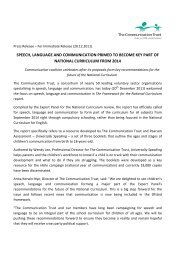Communicating Phonics - The Communication Trust
Communicating Phonics - The Communication Trust
Communicating Phonics - The Communication Trust
You also want an ePaper? Increase the reach of your titles
YUMPU automatically turns print PDFs into web optimized ePapers that Google loves.
<strong>Communicating</strong> <strong>Phonics</strong>Section 4 > Different types of speech, language and communication needs > Children with specific receptive language impairmentCase StudyJames has struggled with literacy since entering school. In storysessions his attention frequently wandered and he found it hardto take turns in the group. Sometimes he appeared to ignoreinstructions and at other times he would do the wrong thing,frequently acting on only the last part of an instruction – forexample heading straight out to the playground without puttinghis coat on first.James sometimes found the busy classroom environmentoverwhelming and easily showed his frustration when he found itwas difficult to fully understand what was required of him.What helps JamesWorking on aspects of James’s communication needs helped tounderpin his acquisition of literacy skills. James has benefitedfrom small group activities in a quiet area, where distractions arereduced. <strong>The</strong>se have included working on the skills of listeningand attention, memory, turn-taking, phonological awareness andrhyming.<strong>The</strong> use of Story-Sacks including objects and puppets, wherethere was an opportunity for James to ‘act out’ stories with lotsof repetition have encouraged James’s interest in the writtenword. James continues to benefit from a multisensory approachto reading. He needs lots of demonstration with shorter sentencesand simpler instructions and lots of praise, which tells him what hehas done well.27


